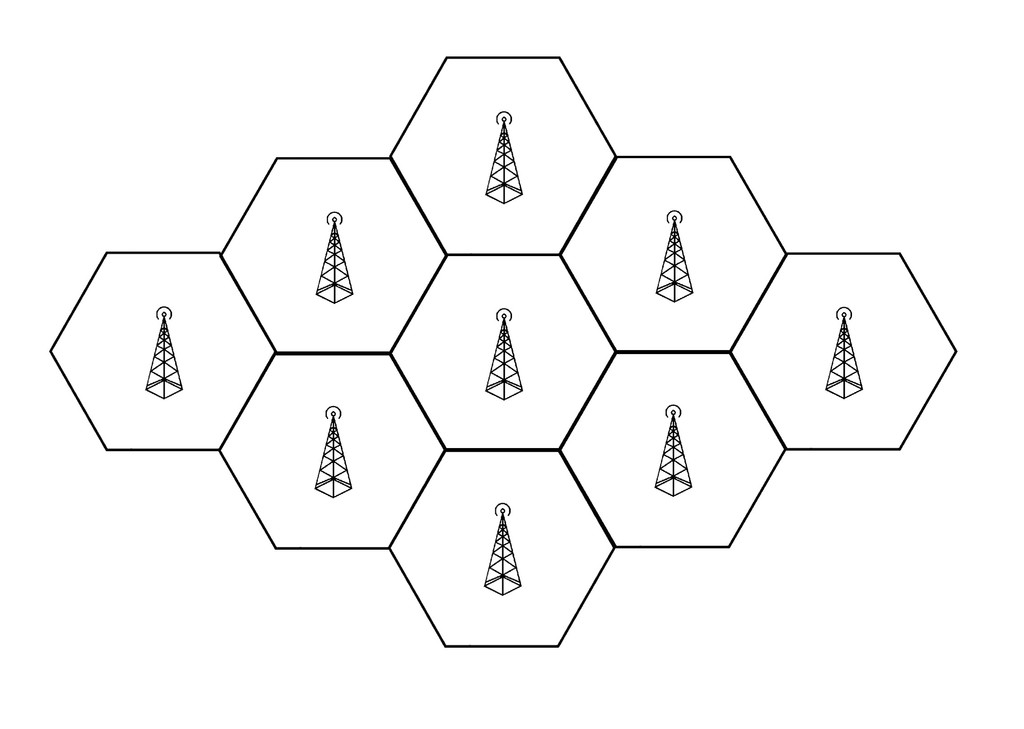The smartphone you carry with you every day has been commonly referred to as a mobile phone, a cell phone, or a cellular phone. While the term “mobile phone” makes sense, why then was a phone ever called a “cellular phone”? To answer that question, we need to first go back to how things got started.
How It All Began
Before the advent of a phone that you could carry around, cellular had a biological or geological meaning and meant “consisting of cells” or “something that contains cavities.” While that definition still stands, the word “cellular” added a new technological meaning with a concept brought forth by two Bell Lab engineers in 1947 named Douglas H. Ring and W. Rae Young. They proposed a network composed of hexagonal cells to allow mobile phones in cars to operate from one spot to another seamlessly. Their network layout resembled that of a biological cell, hence the term cellular, but the technology to implement their concept didn’t exist at the time.
It wasn’t until the late 1960s when another group of Bell Lab researchers expanded on the idea from Ring and Young and began to develop a way for the technology to work. Richard H. Frenkiel, Joel S. Engel, and Philip T. Porter did just that, and Porter was the first to propose that a multi-directional antenna, or cell tower, be used in the middle of each cell. This setup allowed the antennas to be multi-directional, and several channels could be used to handle calls while the tower covered a particular cell.
But why are phones called both mobile phones and cellular phones, and is there a difference?
True mobile phones actually predate cellular phones. The first mobile phone system was launched by Bell System on June 17, 1946, in St. Louis, Missouri. It was a closed system consisting of phones in cars where the calls had to be handled by an operator, and a user had to press a button to talk and release it to listen. But early mobile phone systems had a few specific problems. There weren’t enough channels or frequencies to operate on, so very few people could use it at one time, there were few antennas in the operations area, and the phone required a powerful transmitter, making it very bulky and weighing around 80 pounds.
The cellular network became the complete opposite. It allowed the same frequency to be reused so that more people could use their mobile phones simultaneously, and it required only low power transmission. Also, cellular networks could switch from one cell to another cell without a loss in transmission, and this allowed for a much larger operational area. Another advancement was that mobile phones became duplex devices. This meant that people could talk on a call at the same time since there was a different frequency for talking and another for listening.
The first analog cellular system was introduced by the Nippon Telegraph and Telephone Corporation (NTT) in Tokyo in 1979 for car phones. While the first analog cellular system in North America was the Advanced Mobile Phone System (AMPS). It was introduced in 1983.
At some point, the convergence of the term cellular phone and mobile phone came to mean essentially the same thing without any difference between the two. But calling a phone cellular might not be that accurate. It may be more proper to say that a mobile phone is used on a cellular network or a network composed of cells. Now, of course, we refer to our mobile phones as smartphones since they do more than just make phone calls and are full computing devices.
Sources: The Atlantic, UCSB, Wikipedia



